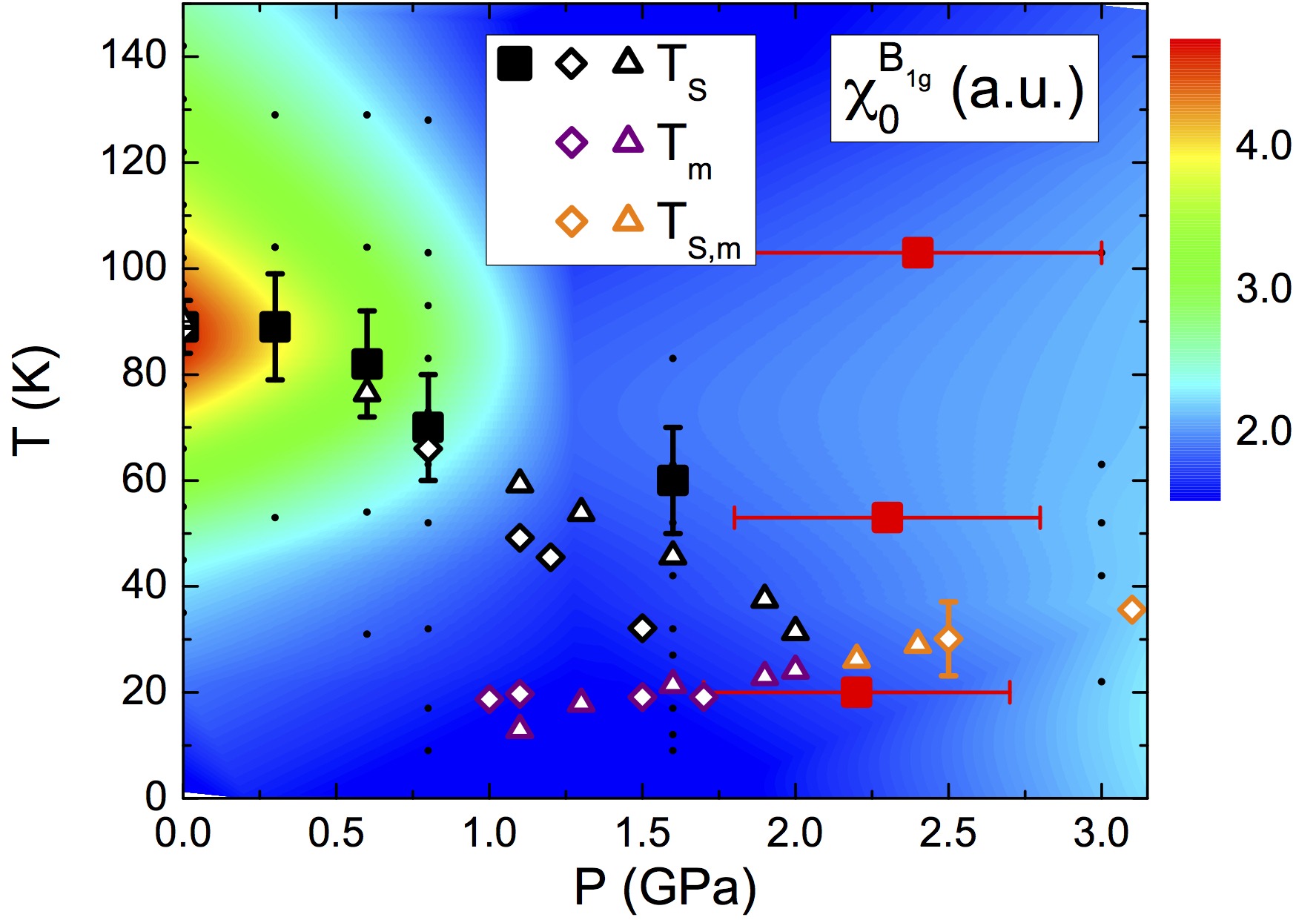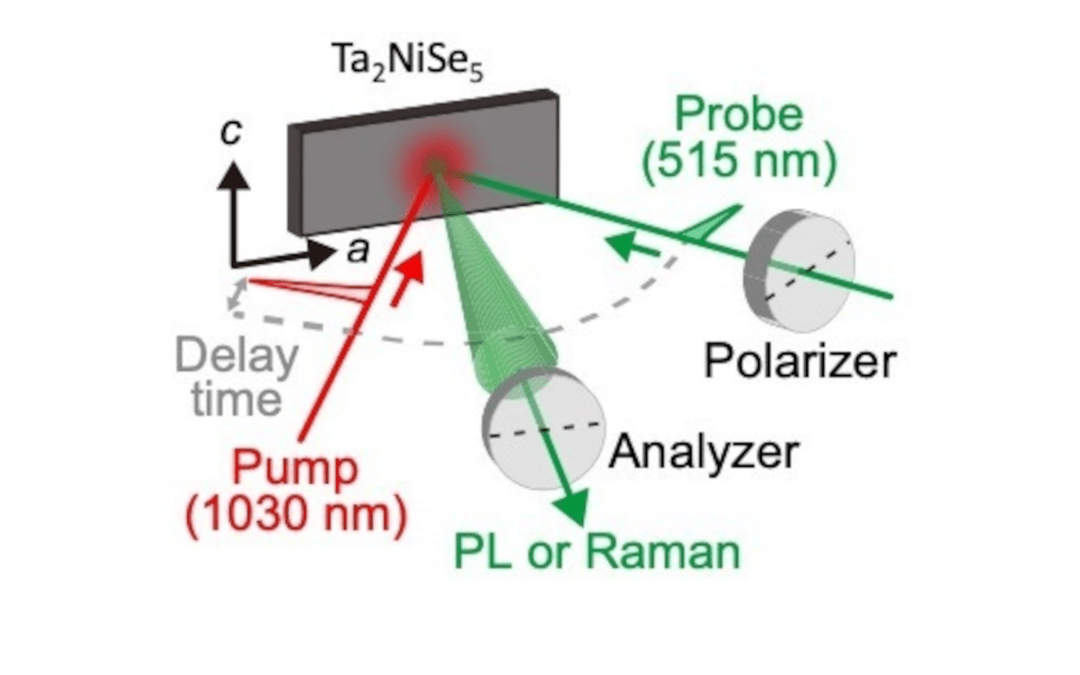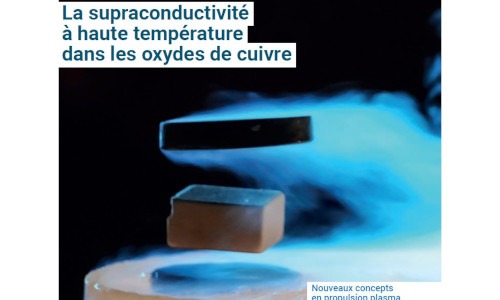Researchers from laboratory MPQ have clarified the link between superconductivity and nematicity, put forward by recent theoretical works, thanks to Raman scattering experiments under pressure. Surprisingly, they have observed a quick collapse of electronic nematic fluctuations upon increasing the pressure, demonstrating that these fluctuations cannot be associated to the large increase of the critical temperature.
The link between superconductivity and critical fluctuations emerging close to a distinct phase transition is one of the main unsolved problems in current research on quantum materials. It has been shown that the atomic vibrations of BCS (Bardeen, Cooper and Schrieffer) theory can be replaced by critical fluctuations of electronic origin. These fluctuations can mediate an effective attraction between electrons, giving rise to unconventional superconductivity. Initially envisioned for magnetic fluctuations, this scenario has been recently extended to the case of electron nematic fluctuations associated to an electronic order breaking the rotational symmetry of the crystal lattice. Nematic fluctuations could play a key role in the superconducting mechanism of several high-temperature superconductors like copper oxides and iron-based systems.
The article “Collapse of Critical Nematic Fluctuations in FeSe Under Pressure” explores experimentally this question on the iron-based superconductor FeSe. This remarkable compound shows a strong increase of its superconducting transition temperature (Tc), from 8K to almost 40K, upon application of hydrostatic pressure. The authors managed to track the evolution of nematic fluctuations up to 8 GPa via polarized Raman scattering measurements in a diamond anvil cell. Surprisingly, they have observed a quick collapse of these fluctuations upon increasing the pressure, demonstrating that they cannot be associated to the large Tc increase. However anomalies observed in the pressure dependence of lattice vibrations indicate an abrupt change of the Fermi surface topology which could be the main factor in explaining the Tc increase.

Color-plot of the nematic fluctuations as a function of temperature and pressure in FeSe compound.
Contact:
Yann Gallais (yann.gallais@univ-paris-diderot.fr)
Reference:
Collapse of Critical Nematic Fluctuations in FeSe under Pressure, Pierre Massat, Yundi Quan, Romain Grasset, Marie-Aude Méasson, Maximilien Cazayous, Alain Sacuto, Sandra Karlsson, Pierre Strobel, Pierre Toulemonde, Zhiping Yin, and Yann Gallais, Phys. Rev. Lett. 121, 077001 (2018)
À lire aussi

Pint of Science
Several of our researchers are participating in the Pint of Science festival, which is celebrating its 10th anniversary this year. It is one of the largest science festivals in the world. Until May 24th, researchers and the general public come together over a drink in...

Excitonic insulator: when electrons decouple from the crystal lattice
Many-body interactions in quantum materials are one of the main drivers of exotic ground states, such as Mott insulators, superconductors, and density waves. Figure:Two-color polarization resolved time resolved Raman scattering set-up. The pump pulse at 1030 nm drive...

Supraconductivity Thematic Days of the GDR Meetic
Two thematic days on superconductivity, as part of the GDR Meetic, are being organized on December 6th and 7th by Y. Gallais, M. Cazayous, A. Sacuto (MPQ), and D. Colson (CEA-Saclay). They will take place in the Buffon amphitheater at the University of Paris (15 Rue...

High-Tc superconductivity highlighted in “Reflets de la physique”
The SQUAP team has published an article, coordinated by Alain Sacuto, in the Reflets de la Physique journal of the French Physical Society (SFP). Reflets de la physique Levitation of a magnet sandwiched between two YBa2Cu3O7 superconductor pellets cooled to the...
